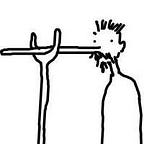West of the Imperial City
Two sets of sights on this side of the city are laid out in convenient and walkable east–west lines, with a mixture of shrines to communism and the crumbling remnants or heavily restored replicas of old China. The broad and windy boulevard of Cháng’ān Jiē that bisects Běijīng, followed underground by metro Line 1, passes in front of the Tiān’ān Mén, heads west to become Fùxīng Mén Dàjiē, and crosses the west side’s (rather more lively and interesting) version of the Wángfǔ Jǐng shopping street, Xī Dān Běi Dàjiē. It then passes fashionable Sino-American architect I. M. Pei’s slightly tedious Bank of China building and a row of Běijīng’s more modern blocks. Some of these are anonymously international, some absurd International-Style-with-Chinese-characteristics monstrosities (of which the worst example is the disastrous Xī Kèzhàn, or Běijīng West Station, further to the south), and some works of genuine imagination including the excellent new Capital Museum, and the old Military Museum, Soviet-style in both architecture and content.
A parallel route along Fùchéng Mén Nèi Dàjiē further north links the most spectacular of the ancient sites on this side, including the Temple of Ancient Monarchs, the White Dagoba Temple, and the museum for the writer Lǔ Xùn.
The contribution of West City (西城, Xī Chéng) to Běijīng’s reckless drive towards all-out modernity is the brand-new Financial Street, a forest of bank headquarters, foreign-run hotels, and a new shopping mall of ephemeral freshness all looking together like a brand-new U.S. city centre. The only overt Chineseness is a reconstructed sìhéyuàn, once home to a busy market, now housing a restaurant, and the last remaining hall of a City God temple, restored to such a degree that it now looks as if it was erected only last week.
WEST OF THE IMPERIAL CITY
Guǎngjì Sì 广济寺
Temple of Ancient Monarchs 历代帝王庙
Sex and the Citizen
White Dagoba Temple 白塔寺
Stupa, Dagoba, Chorten, or Pagoda?
Lǔ Xùn Museum 鲁迅博物馆
Altar of the Moon 月坛
Jesuit Cemetery 利玛窦墓
Línglóng Gōngyuán 玲珑公园
Capital Museum 首都博物馆
Military Museum of the Chinese People’s Revolution 中国人民革命军事博物馆
Běijīng World Art Museum 中华世纪坛世界艺术馆, Yùyuān Tán Park 玉渊潭公园
South Church 南堂
Christianity in China
Báiyún Guàn 白云观
Daoism
Tiānníng Sì Pagoda 天宁寺塔
Next in West of the Imperial City: Guǎngjì Sì
Previously in North and East of the Imperial City: China Agriculture Museum
Main Index of A Better Guide to Beijing.
For discussion of China travel, see The Oriental-List.
